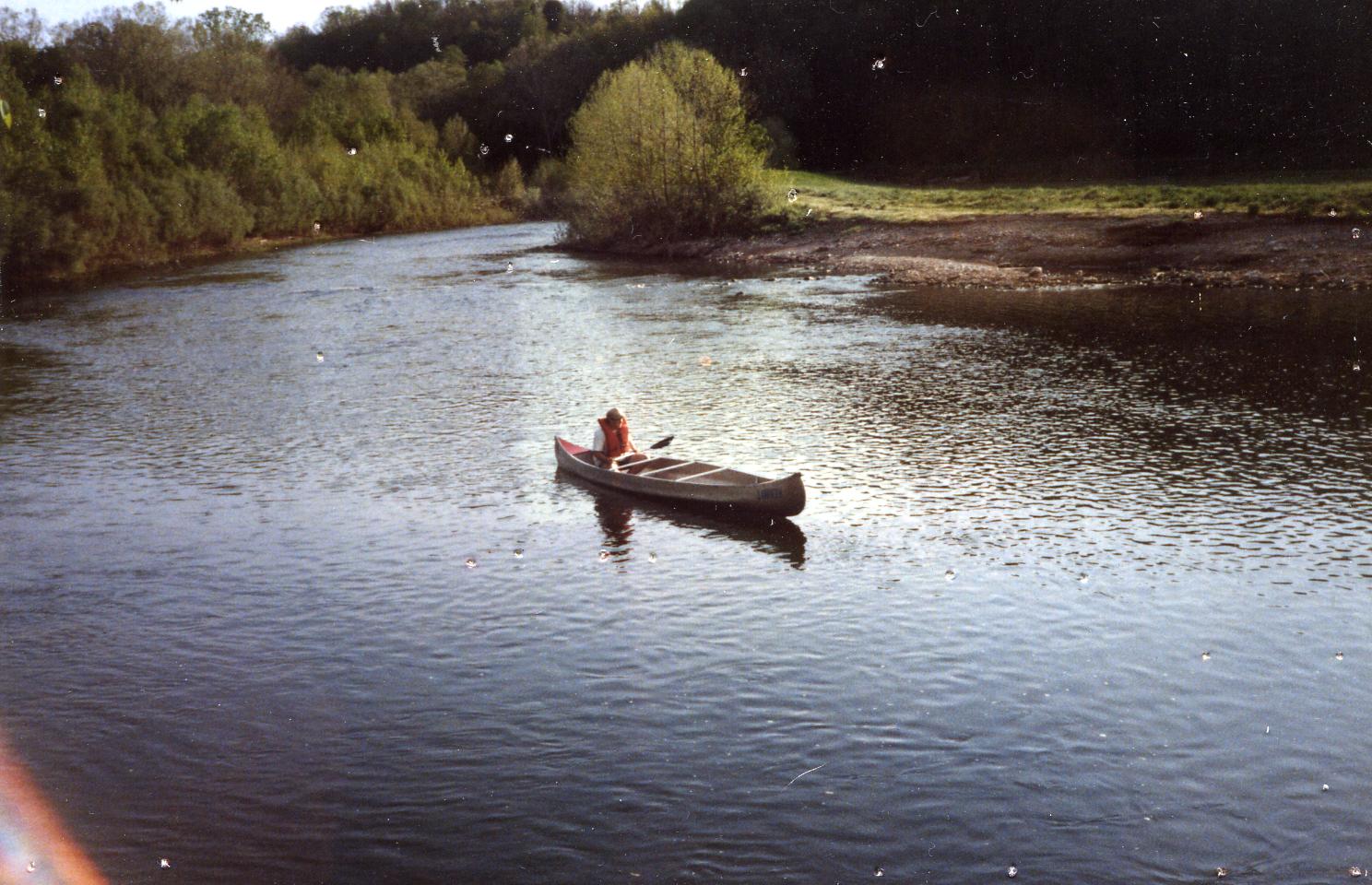
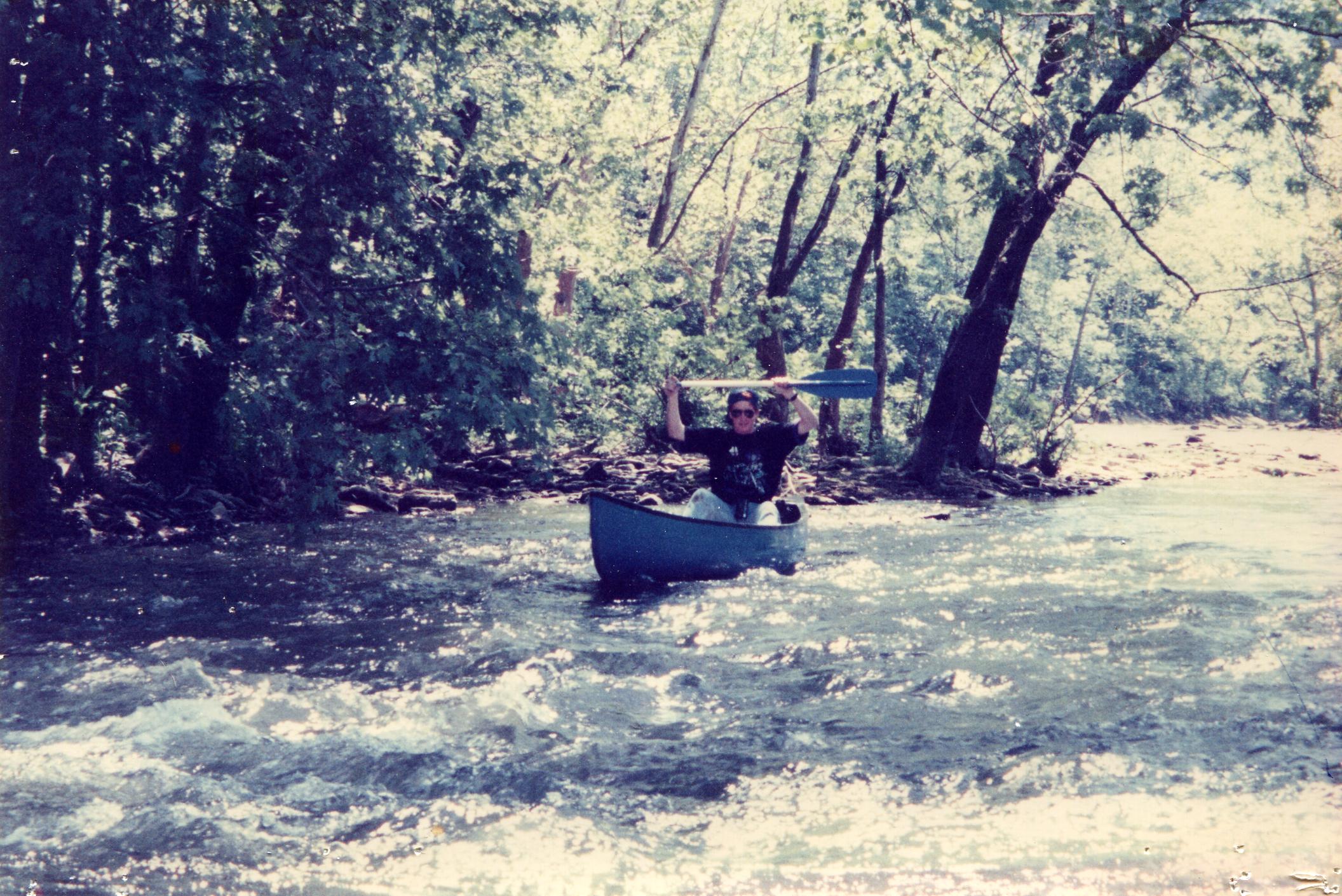
| Route 66 | Cities | Beaches |
 |
 |
Barren |
Blue |
Miami |
Nolin |
Whitewater |
| The Elkhorn has long been one of Kentucky's most famous small rivers because ever since the early 1800s it has been famous as one of the nation's top five trout fishing streams. It's not quite as good for fishing as it once was, but it's still an outstanding canoe river. The Elkhorn is a great third river for families or youth groups. Once kids have honed their skills on the Little South Fork and the Licking, they're ready for more challenging water. The Elkhorn provides it. There's a lot of variety, some excitement and a few problems to solve. The Elkhorn also offers some options. You could put in at Georgetown on the North Elkhorn and spend one day paddling down to Forks of Elkhorn, where the North and South Elkhorn merge. There's a riverside campground and village there. You could camp, then on the second day paddle on down to the town of Peaks Mill. You could do the same two day trip but instead canoe the South Elkhorn the first day. You could do the standard one day 13 mile trip from Forks of Elkhorn down to Peaks Mill. Or you could tack on the final six mile leg, from Peaks Mill down to the Kentucky River. This final leg could be a Sunday morning half day cruise. | 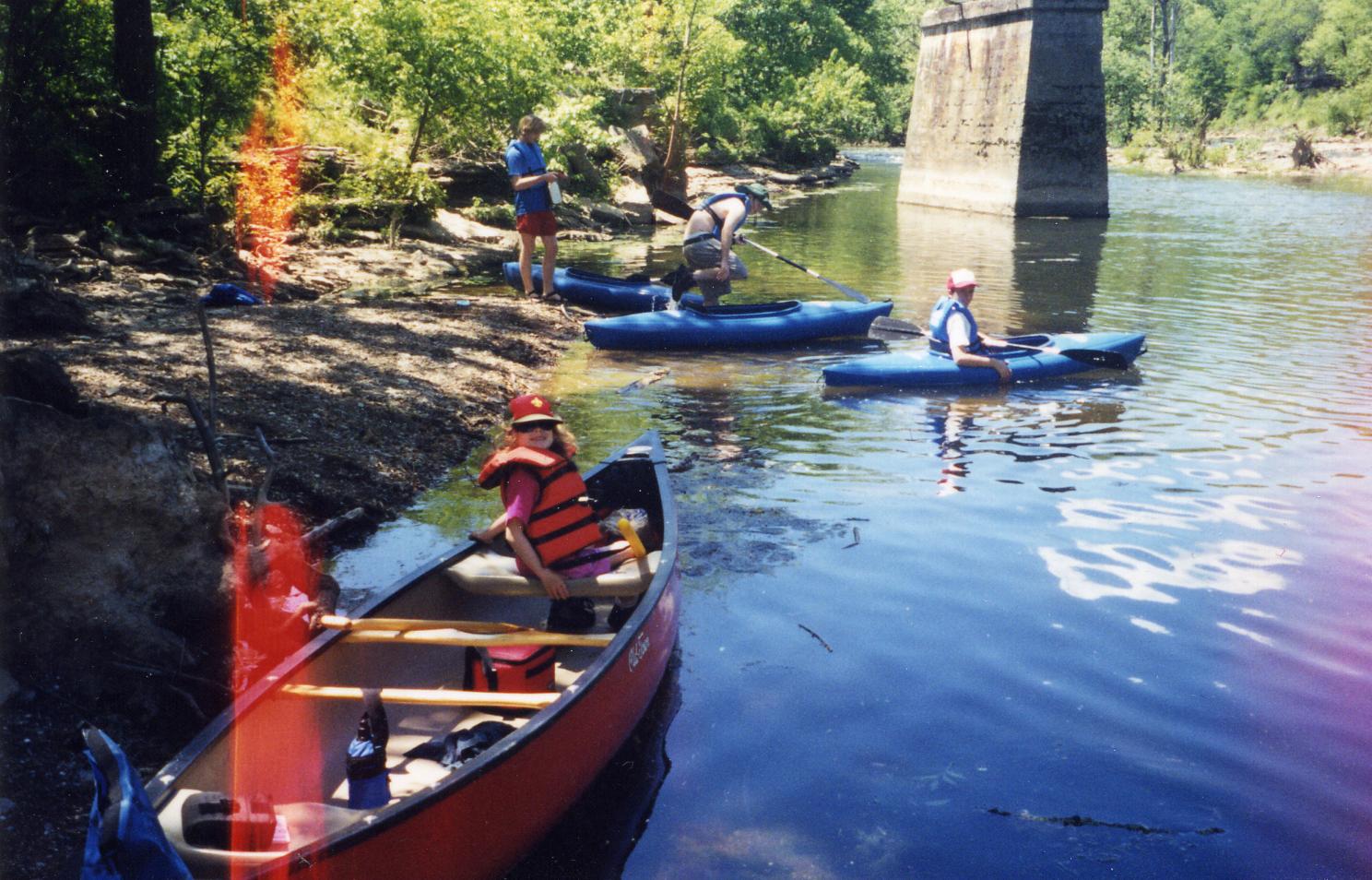 |
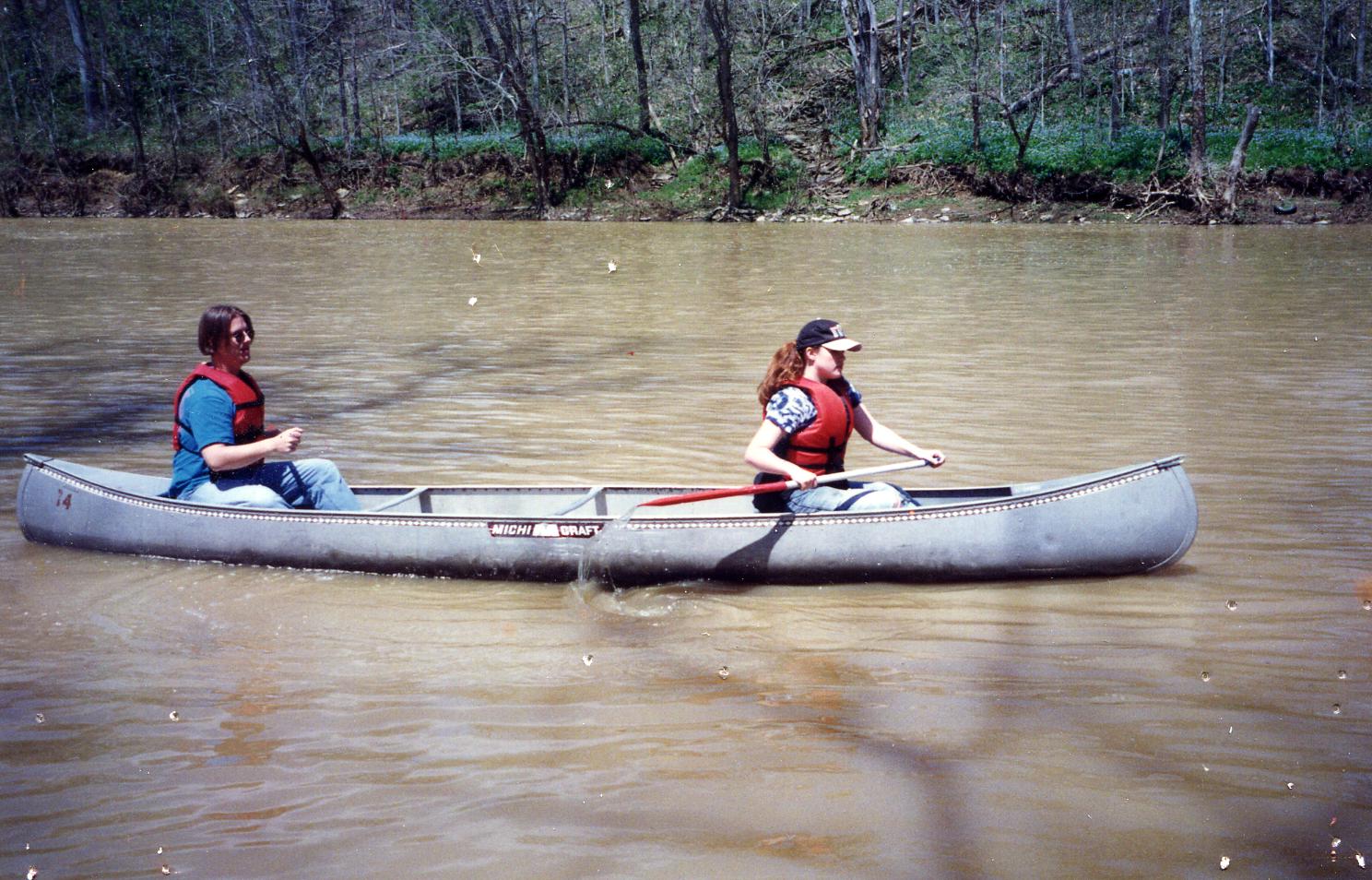 |
Your outfitter on the Elkhorn is Canoe Kentucky, run since 1981 by Ed Council but now in charge of daughter Allison (Depenbrock). Canoe Kentucky is in the village of Peaks Mill, at the "bottom" of the river, where it enters the flood plain of the Kentucky River, even though the Elkhorn still meanders around another six miles before finally reaching it. You can rent or buy kayaks, canoes or paddles at Canoe Kentucky's retail outlet, or you can bring your own and they'll shuttle them for you. Canoe Kentucky is the largest paddling operation in the state, offering lessons in canoeing, kayaking and outdoor leadership certification and subcontracting franchises on the Kentucky and Green Rivers. You do need to call ahead for reservations. This is a tightly controlled river and Canoe Kentucky can only put so many paddlers per hour on it. Two days advance notice is recommended. Phone 1-888-Canoe Kentucky or visit canoeky.com. |
| This is a different kind of river. It changes personalities several times. As soon as you put in at Forks of Elkhorn, usually at the Route 460 Bridge, you find yourself paddling on a lake. This is because the local whiskey distillery has a dam across the Elkhorn, which backs the water up for a mile. So you need to move to river left and be careful. As you near the dam, you need to exit your canoe onto the concrete staircase, lift the canoe out of the water, and haul it down the stairs. You also need to be careful putting back into the water. Right below the dam is a wicked keeper hole. If you put in too close to the dam, as you try to paddle out from the staircase you'll be sucked into the hole no matter how hard you paddle. Water coming over the dam will fill the canoe and you and it both will go under. You have to move as far down along the cement walkway as possible, and as you paddle away from it, you need to stay as far down as possible. However, that brings you to your second problem. The pool below the dam narrows and exits through a powerful chute. That's not usually a problem, since as long as your canoe enters the chute straight it will propel you on out. But as you pull wide to establish that straight line, you have to make sure you're not pulling back and getting caught in that suction from the keeper hole. This sounds a lot worse on paper than it is. Thousands of youth groups navigate this obstacle course every year. But you do have to be careful. We like to carry a coil of rope and if anyone gets caught, we throw the rope and tow them to safety. | 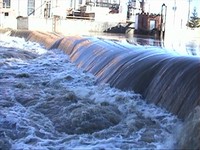 |
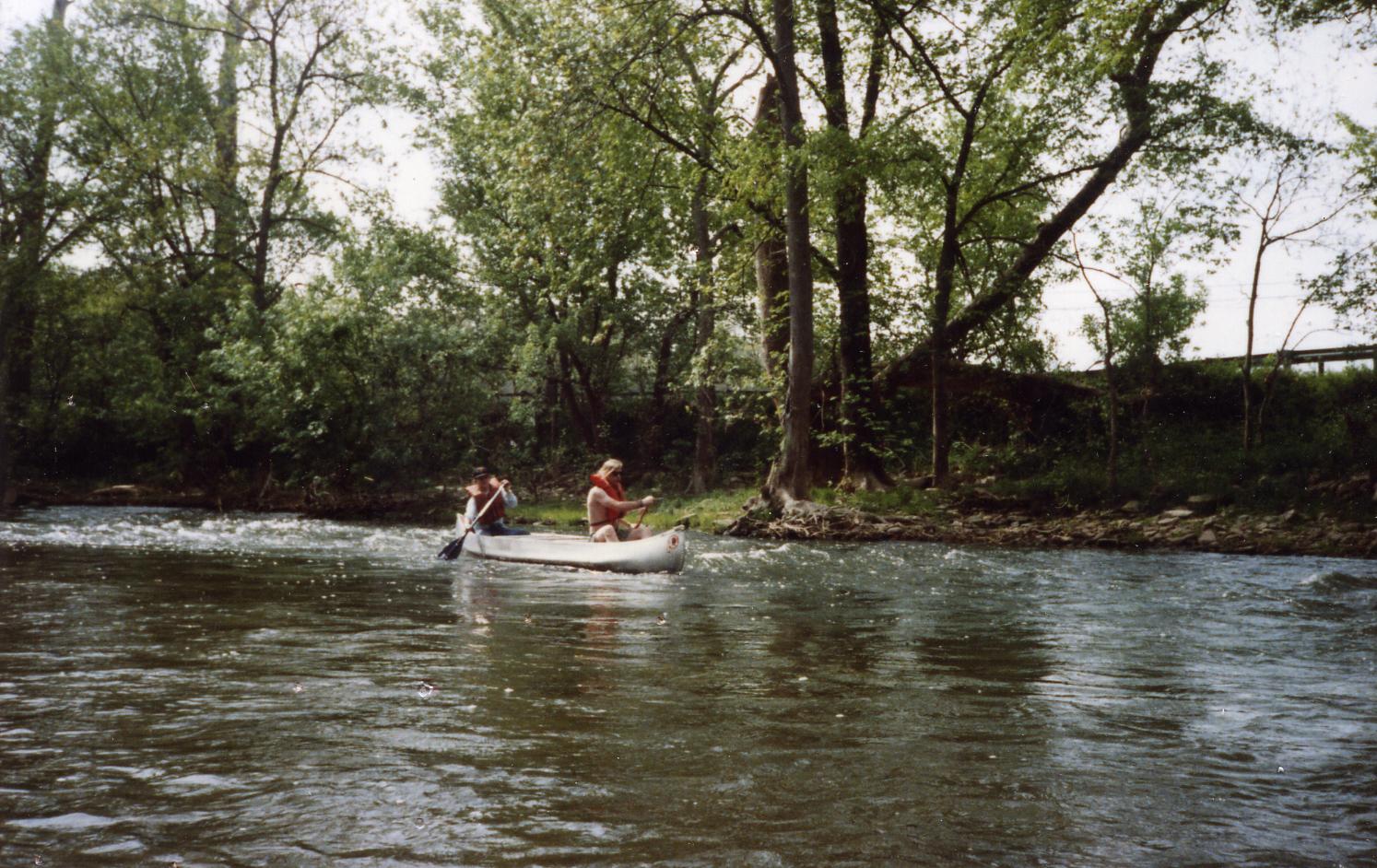 |
Once below the dam and the chute, the fun begins. There are lots of riffles, tight turns, high cliffs and beautiful scenery. The current is usually moving at a pretty good clip, so often you don't even need to paddle hard as much as steer and maneuver the canoe. The first run you'll come to below the dam is "S-Turn," also called "Railroad Turn" (top right). At one point, the long series of riffles called "The Staircase" ends in a great small keeper current. You can turn your canoe, paddle back upstream toward the riffles, position your canoe on the keeper wave, and just stop paddling. You'll be in perfect equilibrium. The riffles coming down the staircase will be pushing your canoe downstream exactly as hard as the keeper wave is pushing it upstream, and the canoe will sit there as long as you keep it aimed directly upstream. When you're ready to move on, just turn the front and the current will shoot it out of the hole and on downstream. |
The high cliffs are on your right. When you see a high cliffline approaching on your left, there's a great lunch stop on that side. You should stop for a break and prepare for your next challenge. As the Elkhorn circles that left cliffline, you have to be careful. The water to the outside of the bend, which is directly below the cliffs, picks up speed and tends to push you out, to the cliffs and into fallen trees which accumulate at the base of the cliffs. You need to paddle aggressively to stay in the middle of the stream as it rounds this bend and not allow yourself to be pushed out. There is an "escape route." You can move river right and hug the inside shoreline. The water there is quiet and you can pick your way down to the drops. They occur as soon as the stream clears the cliffs. There is a great riffle, long, lively and straight, moving down away from the cliffline. Once you're into that riffle, you can enjoy the ride, which ends in quiet water way below. But over the years we've seen dozens of canoes swept into those fallen trees, rolled, filled with water, and pinned there. It's only a foot of water, so exiting the canoe is easy. But righting the canoe and resuming the trip can be very difficult. Usually you have to wait for help. So be careful. |
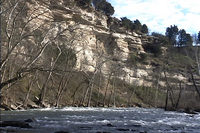 |
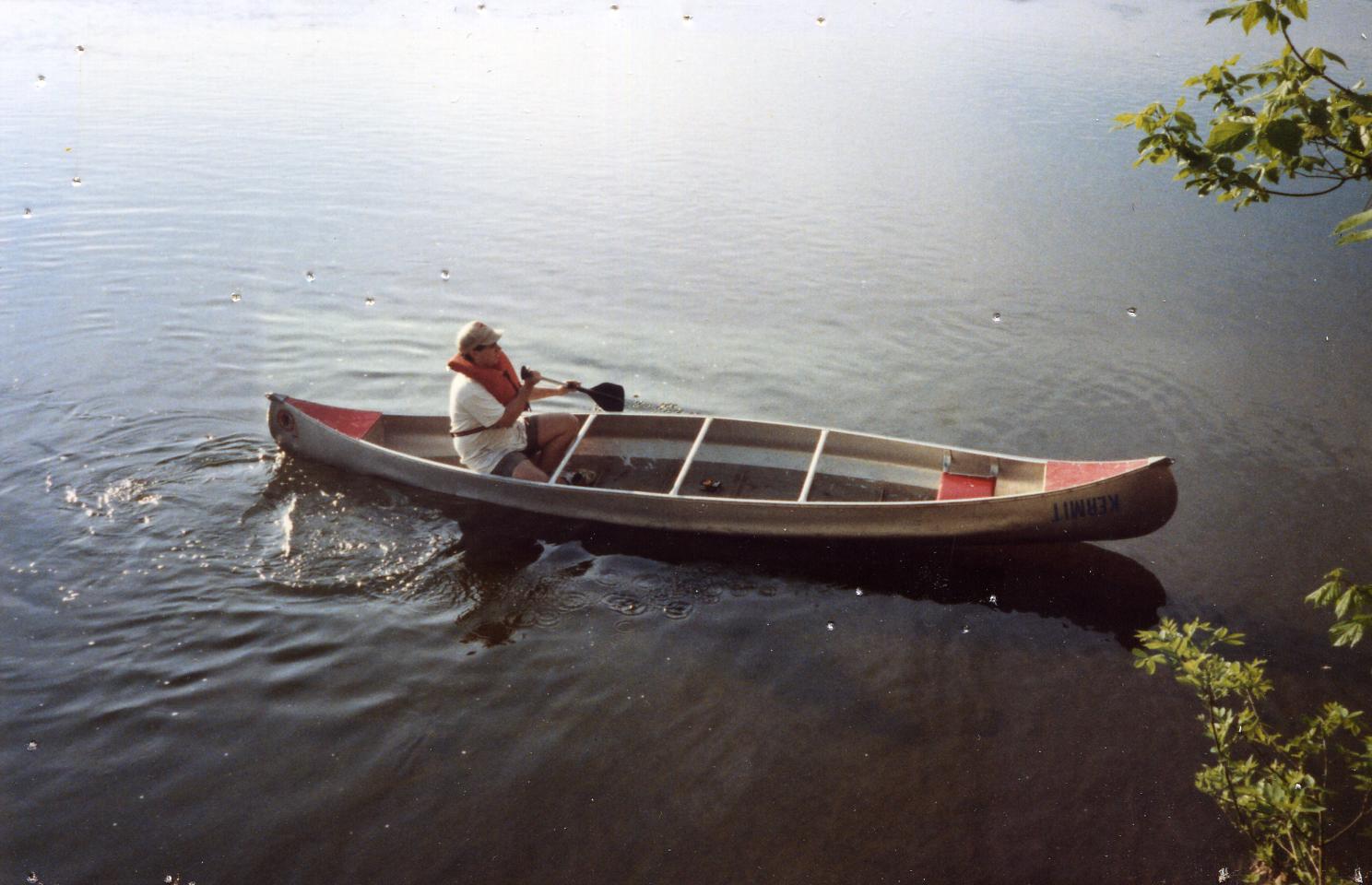 |
Once below the cliffs, the Elkhorn calms down. You're in beautiful country and the stream twists and turns through deep shade, alternating long pools with lively riffles. If you have a seat with a back on it, you can lean back and just cruise. The remaining feature we always find fascinating is a dead end pool as you approach Peaks Mill. If you're not paying close attention the river appears to just stop right ahead of you. The current slows down and there's woods ahead. Eventually you notice that the real river exits to your left and plunges down one last quarter mile of beautiful continuous riffles. That dead end pool is just sort of a gigantic eddy. We don't know of anywhere else in three states where this feature is duplicated. |
| Below Peaks Mill the Elkhorn changes personality again. It has been travelling a rather steep gradient ever since Forks of Elkhorn. But now it's practically level. There's barely enough slope to keep the water moving, and in fact it's not moving much. You have to do a lot more paddling here than you did earlier. Even as it approaches its jointure with the Kentucky, the Elkhorn makes one last very long meander, coming with a few yards of creating an island before it curls back. This is a six mile section of river but you're only covering about a mile on the map. It's a great place to try out new equipment or break out a few inner tubes and have a float trip. |  |
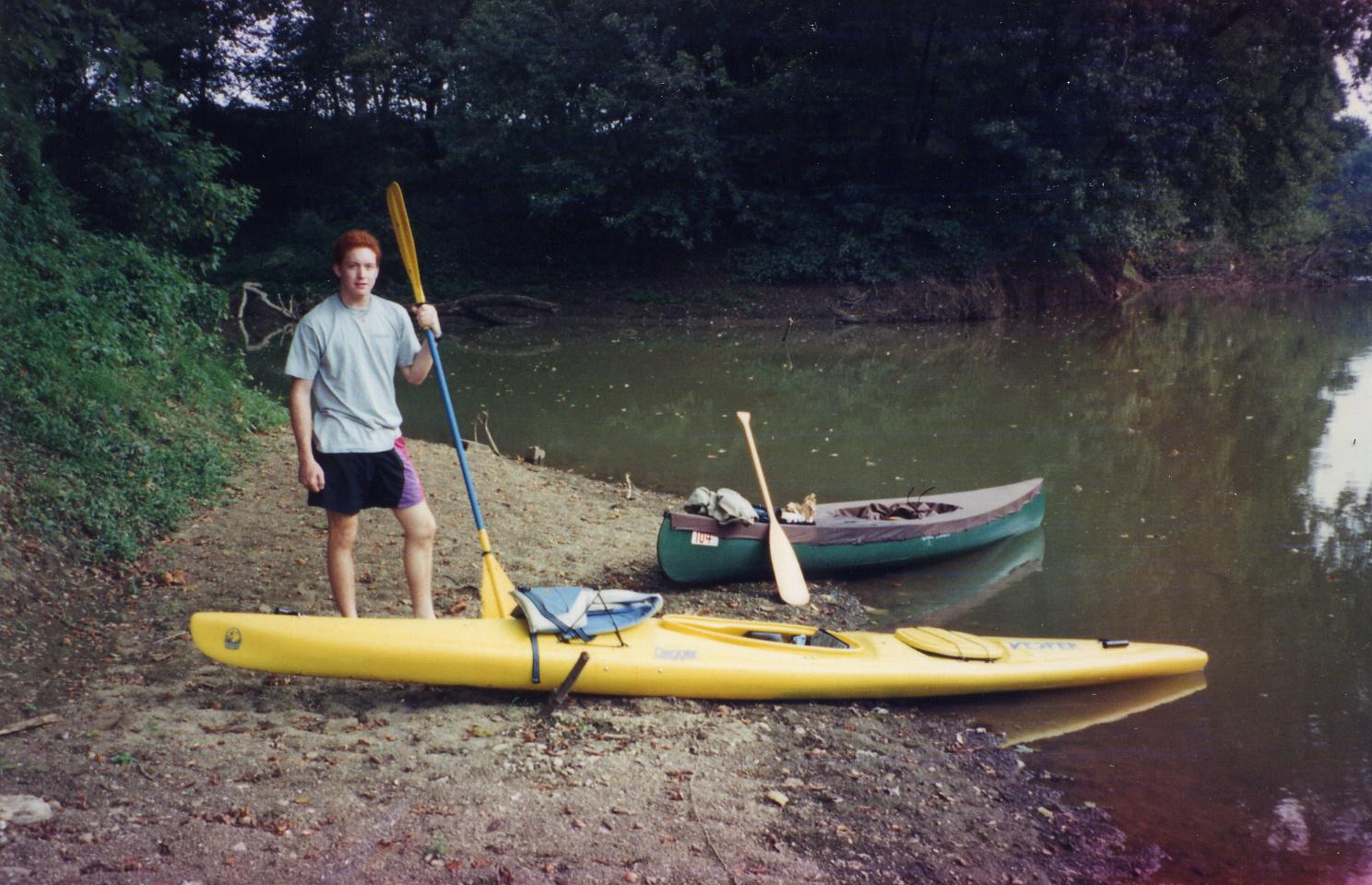 |
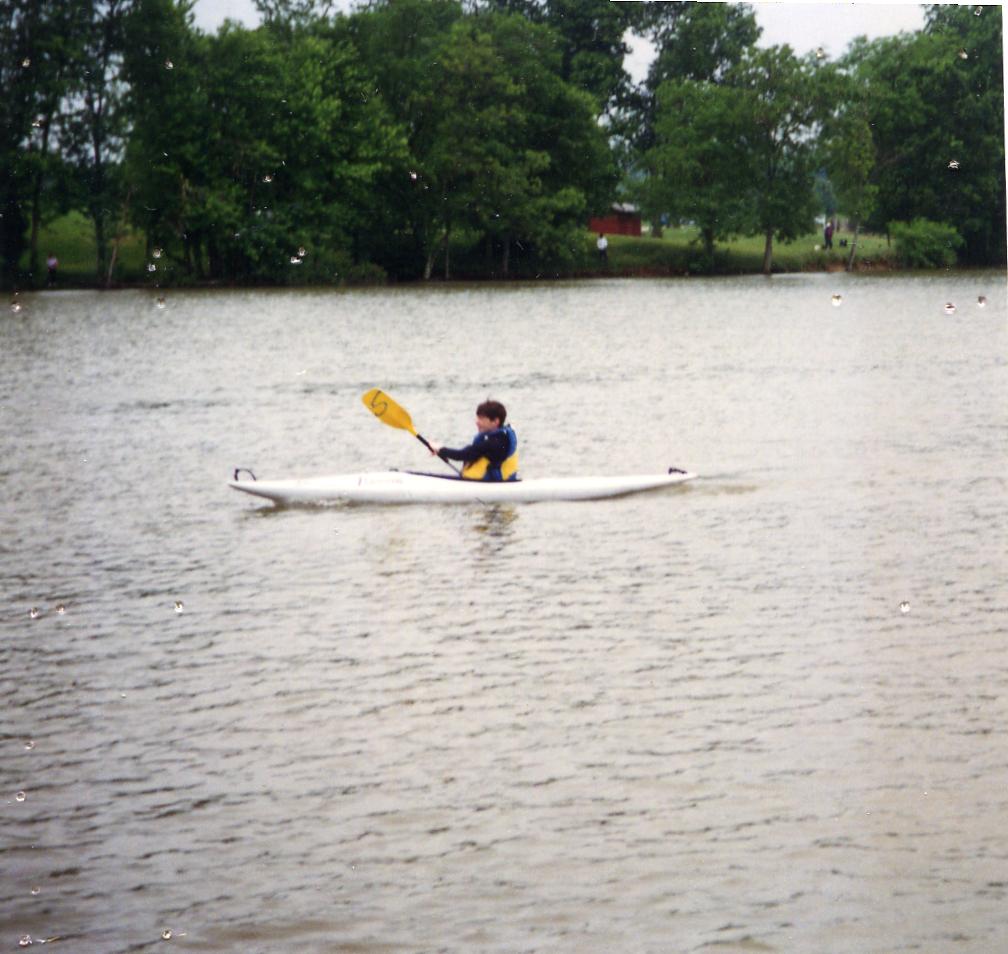 |
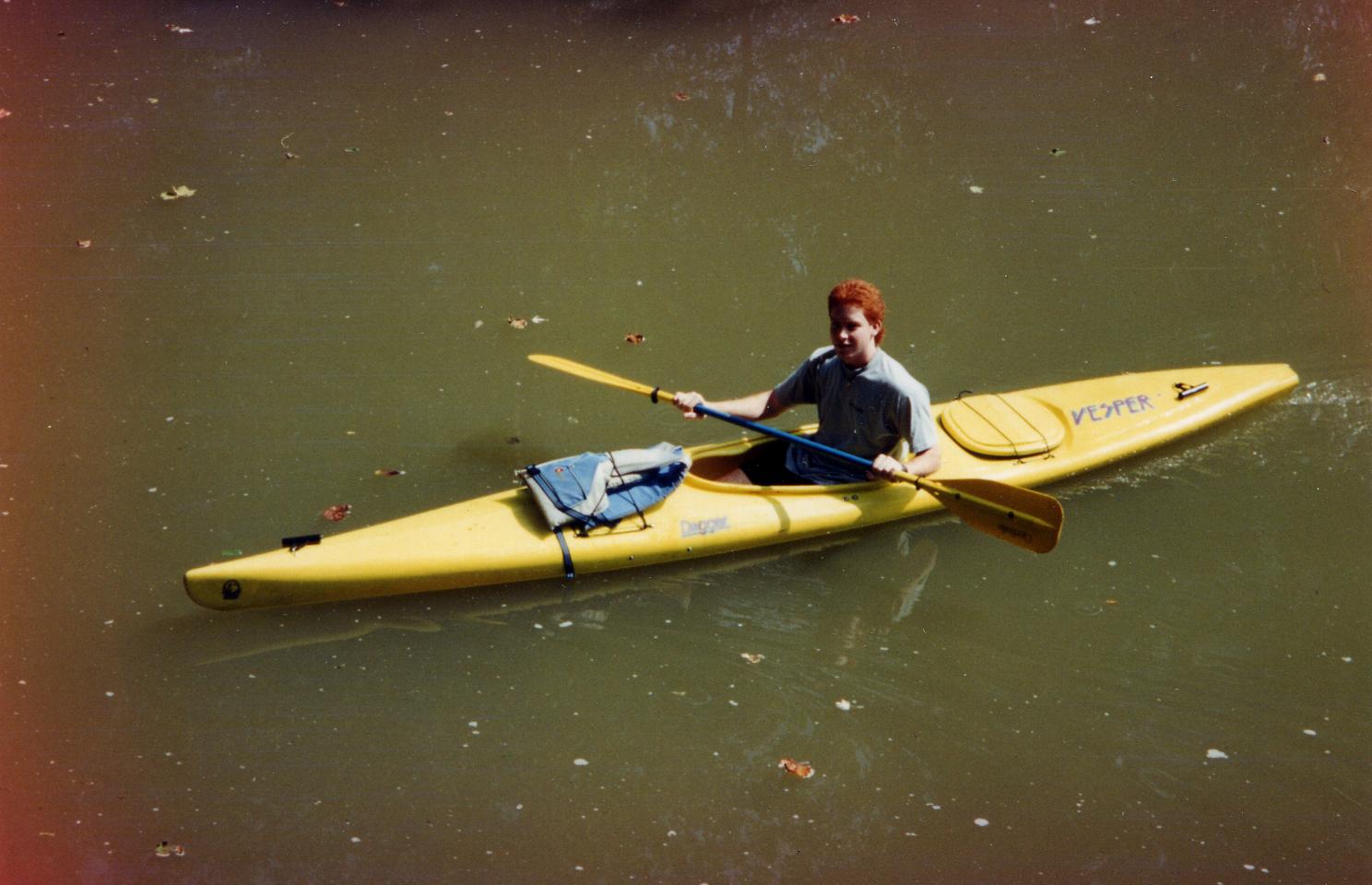 |
|
|||
|